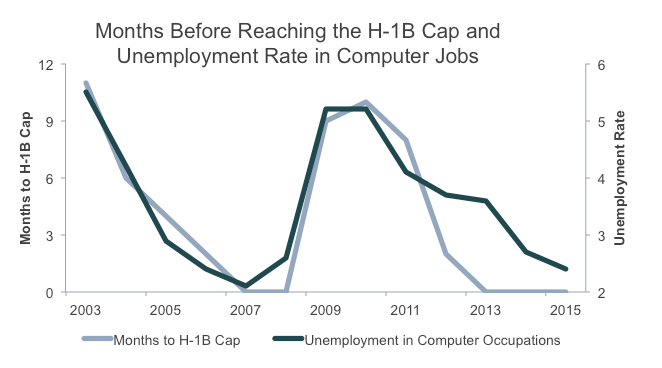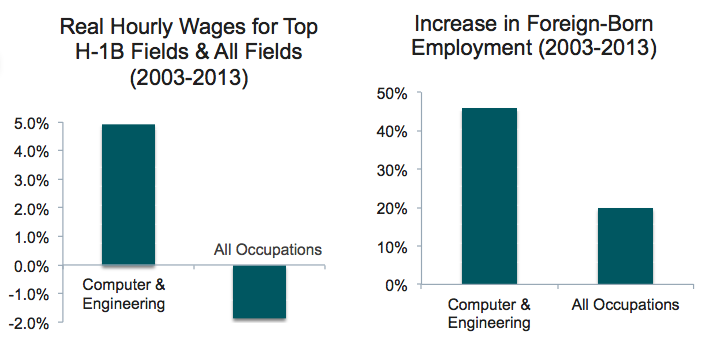EXECUTIVE SUMMARY
Opponents of the H-1B high-skilled work visa argue that businesses use it primarily to replace American workers with cheaper foreign substitutes, taking jobs from native-born workers and undercutting their wages. But the data show that over the last decade, as businesses have requested more H-1Bs, they also expanded jobs for Americans.
If H-1Bs were primarily cheaper substitutes for American labor, the pace of H-1B requests—measured by the length of time before the cap on visas is reached—should rise when unemployment rises, as employers look to cut labor costs by laying off workers. But since 2003, we see the opposite: H-1B requests rise as unemployment falls. For every one percent increase in unemployment for workers with computer and tech expertise, who represent two-thirds of all H-1Bs, it takes an additional three months to reach the visa cap. In other words, companies use H-1Bs to grow, not to downsize.
Moreover, the entrance of a single foreign-born worker into the top H-1B fields—engineering and computer-related fields—is associated with an increase of nearly two new jobs overall in those industries. Despite a 50 percent rise in the number of foreign workers, wages in H-1B fields continue to rise. These workers have proven themselves crucial to America’s economic growth and technological success. Rather than gutting the H-1B program, Congress should remove the arbitrary cap on visas and allow workers to legally change jobs without being deported. This is a better way to address rare cases in which H-1B workers are mistreated or paid below market wages, while increasing freedom and flexibility for both businesses and workers.
Read the entire study here.
- Real hourly wages in the top H-1B fields have risen by five percent compared to a two percent decline for all occupations.
- High skilled foreign workers earned four percent more on a weekly basis than the native-born in 2013.
- Other research has found that H-1B hiring firms create 5 to 7 more jobs than general market conditions would predict and that high skilled foreign STEM workers earn slightly more than native-born STEM workers.
- Economic research has concluded that a one percent increase in foreign workers as a share of total employment raises wages of college-educated American workers by 7 to 8 percent.
- Ninety-five percent of all permanent residents who received a green card from high skilled employment adjusted from temporary status, making the worker program critical to maintaining a strong legal immigration system.

